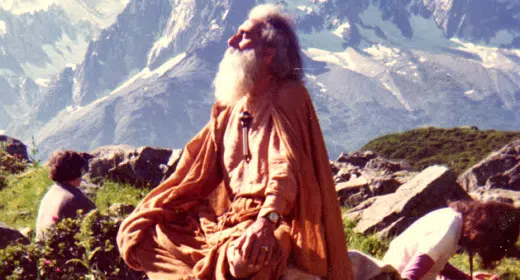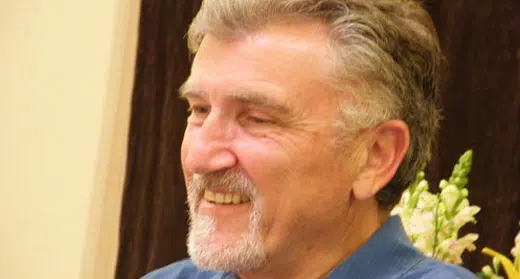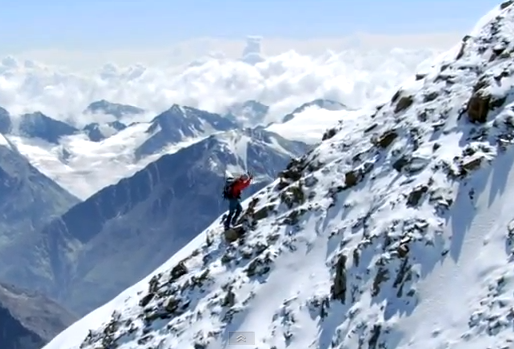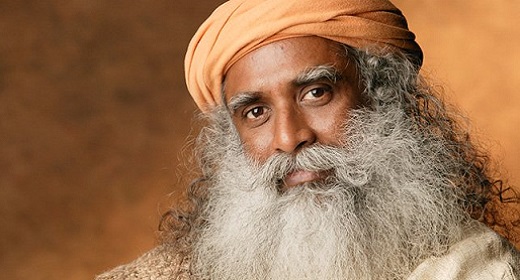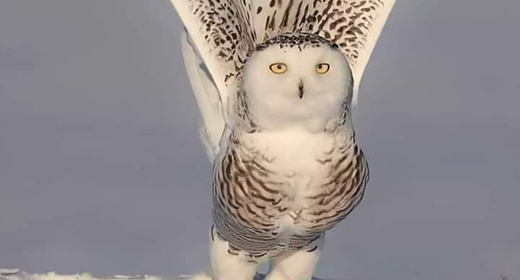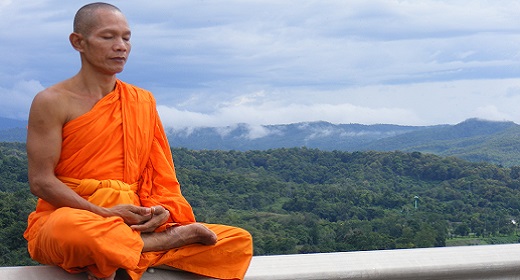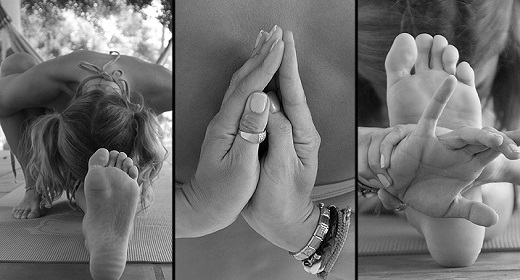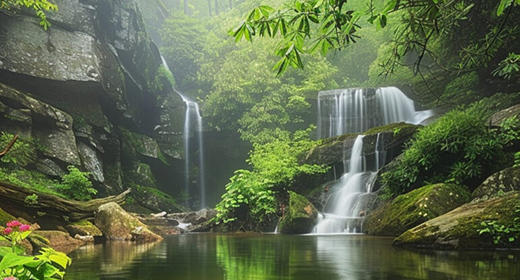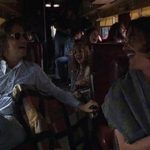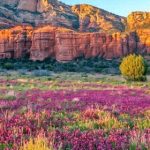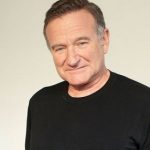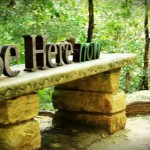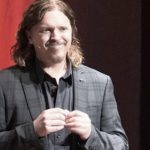by Virginia Lee: More than a cultural historian, more than a transpersonal psychologist, Jean Houston is one of the foremost pioneers on the frontier of human consciousness to live in the 20th century. 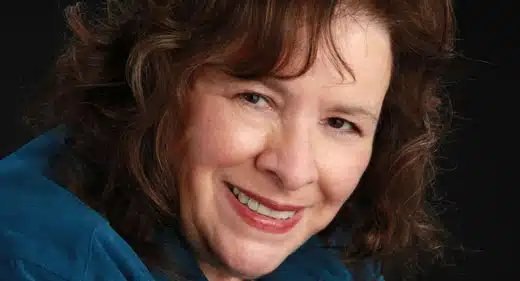 Simultaneously, Jean Houston is heir to the traditions established by anthropologist Margaret Mead, philosopher Teilhard de Chardin, and archetypal psychologist Carl Jung. She was also one of the first to conduct clinical LSD research in the 1960s.
Simultaneously, Jean Houston is heir to the traditions established by anthropologist Margaret Mead, philosopher Teilhard de Chardin, and archetypal psychologist Carl Jung. She was also one of the first to conduct clinical LSD research in the 1960s.
The prolific wealth of Houston’s writing includes 12 books which capture the full spectrum of her life’s work, including The Varieties of Psychedelic Experience, Mind Games, The Possible Human, The Search for the Beloved, The Hero and the Goddess, Godseed, Life Force, and her newest book, Public Like a Frog. Accolades for her work come from the likes of Marilyn Ferguson, Margaret Mead, and Joseph Campbell.
Currently, Jean Houston is co-director of the Foundation of Mind Research in Pomona, New York, with her husband, Robert Masters. She spends a great deal of time traveling the world giving seminars, teaching in the Mystery Schools, promoting cultural preservation, and serving as a consultant on human development.
CG: How would you explain the nature of your work to someone who is unfamiliar with it?
JH: My work has to do with helping to creating the possible human—and the possible society. I have spent many years doing scientific research into the nature and extent of human capacity—neurological, psychological, social, creative, artistic, and spiritual—which at this point includes something like 3,000 research subjects and 1,500,000 seminar participants.
As a result, I have worked in over 40 countries, not only teaching seminars, but helping indigenous peoples to enhance and re-appreciate their own culture. I have worked with the United Nations, UNICEF, and other international development agencies. I am called a midwife to culture.
Now is the most interesting time in all of human history. And we simply will not have the capacity to take on the enormous responsibility for evolutionary and biological government unless we deepen our appreciation of who we are as a culturally diverse species. It is that double perspective of “the possible human” that has become the real steward of the social process.
Even though the survival of certain human cultures is at a critical point right now, there is an interesting turnabout taking place. Because of the abundance of media attention, cultures are becoming more valuable rather than less. Not only do we have cultural preservation, but there are new cultures rising, sometimes with a vengeance. I am discovering in the world a phenomenon I call “re-culturing,” as cultures learn to “re-appreciate” themselves. This is essential as we move into the next century, which in my mind will undoubtedly be the century of “planetization.”
CG: What do you mean by “planetization”?
JH: “Planetization” means living as a planetary society—a world civilization with multiple cultures that are highly individualized rather than homogeneous. Each person will belong to about three cultures: their local culture, their national culture, and their global culture. And as we go deeper into the process of high individuation, people are becoming far more eccentric than ever before, meaning that they are out of the center of their culture and becoming much more individuated. And these individuals require that their own culture becomes more individuated as well.
CG: Does this explain why an American may feel more at home in Bali than in the United States?
JH: Yes, many of us should have been born in Bali. It is probably the most successful culture in the world with highly developed art forms—and totally integrated with its art & music, ritual & spiritual life, agricultural cycles & commerce. Three-quarters of the Balinese people are artists of one kind or another. It’s possible to absorb the genius of the culture simply by osmosis. Bali is a mystery school unto itself.
CG: Is there any particular sequence to the books that you’ve written that perhaps parallel your own personal growth?
JH: I began as a student of the philosophy of religion when I was very young—maybe 21 years old. And because of my studies of myths, symbols, and archetypal structures, I was invited by psychiatrists and physicians who were working with government grants to study the effects of LSD on the human personality. They were tapping into a realm of the human psyche that they didn’t understand and had no background for, and that happened to be just what I was studying at the time.
So, here I was going to school during the day studying with Paul Tillich, and at night I was running LSD sessions with secretaries and stevedores tapping into transcendent, mystical experiences. What I learned is that beneath the surface crust of consciousness, we all seem to be encoded with this vast mythic and symbolic universe—the internal imaginal reality. We are worlds within worlds within worlds. Through my work, I began to notice that my subjects descended through the layers of images in the unconscious—the sensory, psychological, mythic, and spiritual—and it seemed to be something they did quite naturally. Everyone who has done any in-depth probing of the human psyche has come up with remarkably similar findings—Carl Jung, Joseph Campbell, Stanislav Grof.
As a result of working with these 300 research subjects, my husband, Robert Masters , and I wrote a book on our honeymoon entitled The Varieties of Psychedelic Experience. It was written up on the front page of the New York Times book review section. Suddenly, I was very much in demand at the age of 24, and on the road at the same time as Tim Leary.
I wasn’t exactly promoting the use of LSD. Actually, I was explaining how the brain’s natural functions could yield the same results as an LSD experience. So, I set up non-drug programs all over the United States by the age of 25.
We were invited to go into schools, hospitals, even prisons where people were already experiencing an extraordinary theater of the mind due to sensory deprivation. We worked with the capacity to use this imagery to create alternative scenarios, to retrain the mind to be more productive and to raise self-esteem—a program that was tremendously successful in “halfway houses.”
We also helped create programs in schools where art became central to the curriculum and children could not fail anymore. This process of “reframing” education went all over the world, so that children could think ideas through dance, through song, through creative expression. And these children did not fail; they did very well on tests.
What I am saying in one sentence might represent ten years of work—and is what my book, The Possible Human, came from. Another book, Listening to the Body, grew out of my work with Moshe Feldenkrais. All of this work is an extension of neurological re-education.
CG: In retrospect, how did your work with LSD influence your career?
JH: It changed everything. What we saw was the amplification and magnification of the psycho-dynamic process. When the research grant ended in 1966, my husband and I created the Foundation for Mind Research to continue the work. Instead of LSD, we used hypnosis, active imagination, and meditation. We created curious devices such as “altered states of consciousness” chambers. We were involved with the people who created the first “electric circus,” with 30 different slide projectors dissolving images simultaneously and contained within a circumferential biosphere of sound.
CG: Do you see LSD as a blessing or a curse?
JH: For researchers, it certainly was a blessing. But what was launched into the public by the media was something different. Since there were no clear guidelines as to the inherent dangers and the opportunities of using LSD, it became a circus and for the kids it was Russian roulette. But ironically, many of the researchers who went on to explore the realm of human capacity came out of the early LSD research.
The next book my husband and I wrote had to do with non-drug studies, and it was called “Mind Games.” It was a book people could use to create altered states and explore their inner realms without drugs—things like time distortion and visual landscapes.
CG: Then you would acknowledge that there is some validity to LSD experiences that people have had?
JH: Yes, it’s all in the preparation. We would prepare our subjects for days, weeks, and sometimes months in advance. And we were using very pure (Sandoz) LSD, which is a big difference from the “windowpane” you find on the street that has usually been laced with strichnine. People have been taking visionary vegetables for centuries.
CG: Many young people today are curious about the psychedelic era of the 1960s. What would you say to a teenager who wants to try LSD?
JH: You have to remember that taking LSD only amplifies what is already going on in the human psyche. If a teenager is already experiencing some degree of emotional instability, the drug will only intensify it. And it’s hard to know how pure the LSD is when acquired through untraceable sources.
An adolescent who is already going through a challenging process of hormonal change and physical maturation is simply too young to try LSD.
If it were pure, and if it were legal, it would be ideal to take LSD with an experienced guide in a peaceful, undisturbed setting as a chance to experience the unfolding of the human psyche. LSD is not an innocent thing. It is not a “fun” drug, and there is no way that I can endorse it. I tend to be against drugs in general. The strongest thing I ever take is aspirin.
CG: How do you translate archetypal mythology into a 20th century context?
JH: Archetypal mythology is in a kind of “jumping jack” state right now, because we have become so vulnerable and available to our own depth. Today, we live five to a hundred times the experience of our ancestors of a hundred years ago. Most of us are so wounded by this excess of experience and the unexpected that we are almost holy.
These archetypal personalities are hanging out on the fringes of human experience waiting to become part of real life. Archetypes are rising all over the world, and they are also mixing and matching. I talk about this in The Hero and the Goddess, how Athena is talking to Spider Woman, how Isis and Eagle Woman do lunch.
I witnessed this in a most remarkable way in India. About a year and a half ago I noticed that everyone would stop on Sunday and turn on the village TV set to watch a lavishly produced version of the Indian epic, The Ramayana. I was sitting on the ground one Sunday watching this glorious story of how Rama rescued his beloved wife, Sita, from the clutches of the evil demon king of Sri Lanka. There was this old Brahmin lady sitting next to me on the ground who said to me, “I don’t like that Mrs. Sita. She is much too passive. We women in India are much stronger than that. She is a very , very bad model for us—she is so passive, so weak. We’ve got to change the story. And that Rama is just like so many men in India—just a lazy bum! We’ve got to change the story.”
And what show do you think followed next after The Ramayana, with hundreds of millions of Indian people watching? It was “Dynasty.” I was mortally embarrassed. And the the old lady said to me, “Don’t you see? It’s the same story. You’ve got the good lady; you’ve got the bad lady. You’ve got the good man; you’ve got the bad man. You’ve got the beautiful house and the beautiful clothes. You’ve got the people flying through the air. You see? It’s just the same story.”
And so, the same story reached out and crossed in mythic patches that spanned eons of time and vastly different cultures. And that’s what I call a world mythology. And it’s happening all the time. All our cultures are bleeding through into a collective global consciousness. It’s no longer the lonely adolescent hero trying to find himself. Now the search for the Holy Grail is done in a group. And it’s no longer the damsel in distress either. Women are now equal to men, and they’re not there just to be rescued.
CG: Do you still think we need heroes and heroines?
JH: It seems that we do. To me, heroes are people who have died to their modernity and been born to their eternity. They are people who have gone to their edges and profoundly done their human homework. They have taken on a great task of realizing that they have been living in an outmoded condition and that it is up to them to reinvent the world. They are co-creators on the evolutionary front.
CG: In your most recent book, Public Like a Frog, you refer to Emily ****inson, Thomas Jefferson and Helen Keller as American heroes. How can they rescue us from our current cultural demise?
JH: What I propose in that book is that the lives of these three great Americans are each in their own way connected to the psychic depths of America. America is loaded with psyche. As I suggest in the book, we are the oldest modern culture in the world. We were the first to go through the industrial revolution, the urban revolution, the ethnic revolution, the racial revolution, the outer space revolution, and the inner space revolution. America was not just founded by a few generations of frustrated Europeans, but by the visionary hopes of millions of people over thousands of years. Ours is the mythical land beyond the western waters. We are their vision made real.
The three people I’ve profiled are tremendous visionaries. But in America, the whole mystical process became objectified and materialized since it took place at the same time as the Industrial Revolution. In many ways, we found our Manifest Destiny too quickly. But they tapped into the psychic soul of America and found that powerful and sacred source: Jefferson was able to reinvent the whole nature of society; ****inson was able to reinvent language, art, and perception; and Keller, as damaged as she was, was able to rediscover human possibility. And I doubt if any of these extraordinary people could have grown in any other soil.
In Public Like a Frog, it is possible to “incarnate” into the lives of each of these people through a series of exercises, opening the door to discover their true genius. If you spend several hours with each these people from the inside out—not just appreciating their objective genius—but really incarnating their greatness, then you will become part of the larger story of these great beings.
Like ****inson, we all have great mysteries and remarkable stories to tell. Like Jefferson, we are all architects of our destiny, and like Keller, we are all capable of exceeding what we perceive as our limitations.
CG: As a psychologist, how would you talk to an audience of young people about the atmosphere of violence and mediocrity that they are surrounded with?
JH: I would begin by telling a story. I would tell a story of a great teenager, like Parsifal, who went in search of the Holy Grail. (Parsifal’s name means “total fool” and “piercer of the veil”—which is the archetypal teenager.) I would set up a lure of “becoming,” through song, and music, and dance. I would ask them to take the personal particulars of their own lives and link them to the universal qualities of a great life, and learn skills by doing it. I would take them on the classical hero/heroine’s journey so that they could hear a call, and decide whether or not to answer it. I would give them processes by which they could find allies, not only between each other, but within themselves requiring them to tap into depths they didn’t even know they had. Then we would cross a great threshold and take on a larger challenge—an adventure like a “vision quest.”
I would ask them to transcend their own sense of mediocrity and discover their own inner beloved—and make a pact with the God Self that they encounter. In that sacred place, they would discover creative tools that they could then bring back into their “real” life to offer as a service to the world. It is very important that they come back to do some service in the world.
CG: Is this process the essence of what you call a “Mystery School”?
JH: That’s one aspect of what a Mystery School can be. The central question is, “How do we place the local self in service to the Higher Self?” We also need to ask ourselves, “How can we live a life that will not only enhance our own life, but also that of our family, our community, and our planet?” I take these questions and apply them through various means: biography, mythology, and the spontaneous oral flow of my lectures.
It’s both experiential and experimental, exploring the realms of psyche and spirit using the myths of many cultures. But you don’t extend the mind without extending the body too. We require that everybody—to the best of their ability—meet each other at the highest level. A lot of couples have found each other through the Mystery School and gotten married. And to date, none of them have gotten divorced.
CG: How have specific events in your life shaped your destiny?
JH: In The Possible Human, there’s a story about my religious experience in the closet with the Virgin Mary. It’s a very funny story, but after that experience I knew absolutely that we are citizens of the universe—larger than our aspirations, more complex than all our dreams. After that, I knew I had no free will. I knew I was utterly patterned to a life serving the larger story of which we are all a part. Some people just know how to tap into that larger reservoir.
It’s much like the story of how I literally ran into Teilhard de Chardin. When I was 14, my father had left to marry someone else, and I was in a state of overwhelming grief. So I used to just run and run to get away from my grief. I lived in New York City, and one day I was running down Park Avenue to get to school. I ran into this old man and knocked him down; I knocked the wind right out of him. I picked him up off the ground and he asked me, “Are you planning to run like that for the rest of your life?”
The following week, I was walking my fox terrier, and there was the same man coming down the steps. We greeted each other and he asked if I would like to take a walk in Central Park (it was safe in those days). So, we began to take these incredible luminous walks every Tuesday and Thursday. He had no self-consciousness whatsoever, and no one had any idea who he was, including me. He asked me to think like a caterpillar, and taught me how to sniff the wind. He made everything a great celebration of life. He would talk to the trees as if they could understand him, and he would look at me as if I were God-in-hiding. One day he went on and on about the floor in Chartres cathedral. He said, “Jeanne, in your time, you will be taking the tiller of the world. But you cannot go directly; you must touch upon everything in your path.” This kind of conversation went on for a year and a half. One day I said, “Au revoir, I will see you next Tuesday.” But next Tuesday he did not come. He had died but I didn’t know it.
Years later when I was in graduate school, I saw a copy of The Phenomenon on Man in a bookstore. I turned it over and saw a picture of him on the back. Only then did I realize that my friend was Teilhard de Chardin. Needless to say, he was a profound influence on my life.
Then there was Margaret Meade, who was the president of our Foundation for Mind Research for a period of time. It’s no great secret that I was her adopted daughter. She was the one who trained me to recognize the patterns of human potential in society and who taught me how to see the genius of culture. Her husband, Gregory Bateson, (author of An Ecology of Mind) was another great teacher.
CG: Do you think that there is a universal master plan or is evolution just a random process? What is your vision of the future?
JH: I think the answer lies somewhere in between. I think that we are co-creators. And I think that there are patterns in the universe as well as multiple realities. I think that we are always on the path of innovation and creation. It’s not a cookie-cutter universe, but there are some very great designs. Different realms of reality have different laws. That’s why when certain people tap into deeper dimensions and frequencies of mind and body, they can work miracles. If I were to use a metaphor, I would say that this is “God school.”
We are in the corner of the galaxy— the perfect place for an experimental laboratory. We on the verge of a very high level of civilization and we are in stewardship to become responsible for evolutionary and biological government. There has been prodigious growth in our own time of emotional, psychological, spiritual and ecological capacities to be worthy of this stewardship.
In only a few hundred months, we are going to be leaping off into the solar system. Within the next 200 years, we will be terra-farming Mars and living in thousands of biospheres in a slow orbit around the sun—all electronically linked. We will be exploring inner space through Virtual Reality. We cannot even imagine the degree, complexity, and acceleration of change a hundred years from now. Life will be oriented to a solar psychology.
About a thousand years beyond that, I think we will figure out a way to join the galactic milieu. We will not be only recreating planets—we will be creating new forms of life. This is not just science fiction. I believe it is just the natural process of evolution. But most cosmologists agree that we are not prepared for this. We have been marinating in the medieval mind-soup of suffering for too long.
CG: You once had a near-death experience. Can you comment on what a person can gain by facing death?
JH: I have come close to death several times, but the most dramatic one was when I was 19 and had taken up parachuting. It was very cheap in those days: $5 a jump and only $25 to learn how. I used to go on Saturdays. One day I jumped and my chute didn’t open. I pulled and pulled but it just didn’t work. After the initial panic in my mind, I must have switched into the mode where my whole life went by. Mind you, it wasn’t every Hershey bar and pork chop, but all the significant things were there. It was actually quite peaceful. Then the chute suddenly opened, or else you and I are having a conversation in paradise.
Another time I had typhoid fever in Crete, and there was no doctor. I was just laying on a wooden palate on the floor. My temperature had gone up beyond 107°, and that’s when the Great White Goddess of Ancient Greece showed up complete with bare breasts and flowing skirts, lifting her arms as she danced around the room. Then I found myself passing through a doorway into a tunnel of light, and it seemed very natural. All of a sudden I realized that I was only 20 years old, so I consciously pushed my way back into life with an enormous psychic effort. A lot of my hair fell out and I lost 25 pounds.
What there is to learn from a near-death experience is that it shows you the boundaries of life, and casts a shadow which makes you appreciate what life is. While it intensifies your daily life, it also opens you to the fact that you are a multi-dimensional being. It goes in both directions. Although you may feel claustrophobic in the nutshell of time, you know that you are a part of something larger.
CG: Where are you now in your own personal evolution?
JH: It changes hourly. I’m in the process of writing my autobiography for Harper & Row, so I’m in the midst of deep reflection on my life as a series of fractal rays within the resonance of certain patterns.
On the existential theme, I am preparing to do a television program for the same people who did the Bill Moyers & Joseph Campbell series. I teach constantly all over the world, so personal evolution has taken a back seat. I have a regular spiritual discipline, but in 1995 I am looking forward to taking a great deal of time off, which is something I have never done before. I will have time to sit and ponder so that I can really answer your question.
CG: If you could recommend just one of your books which best summarizes your life’s work, which one would it be?
JH: It would be the new one—Public Like A Frog. It deals with the extraordinary issue of all the things we are as human beings, so that we can live to our fullest potential. All my books appeal to different people at different stages of development. The Possible Human is a good entry-level book; The Hero and the Goddess is about the transformational journey, while The Search for the Beloved is about discovering the divine within. Godseed is about reliving the journey of Christ, and Listening to the Body offers a series of psycho-physical exercises to awaken consciousness. Life Force takes you through the stages of human history as well as your own path of personal growth. Public Like a Frog does something very different. It really engages you to incarnate into a life of greatness and discover your own genius.
Virginia Lee was Associate Editor and served on the Editorial Board of Yoga Journal from 1980-85, and has been widely published in magazines ever since, including Harper’s Bazaar. She was a regular feature writer for Common Ground from 1992-2002, and has also written two books: The Roots of Ras Tafari published by Avant Books of San Diego in 1985, and Affairs of the Heart published by Crossing Press of Freedom, CA in 1993.


